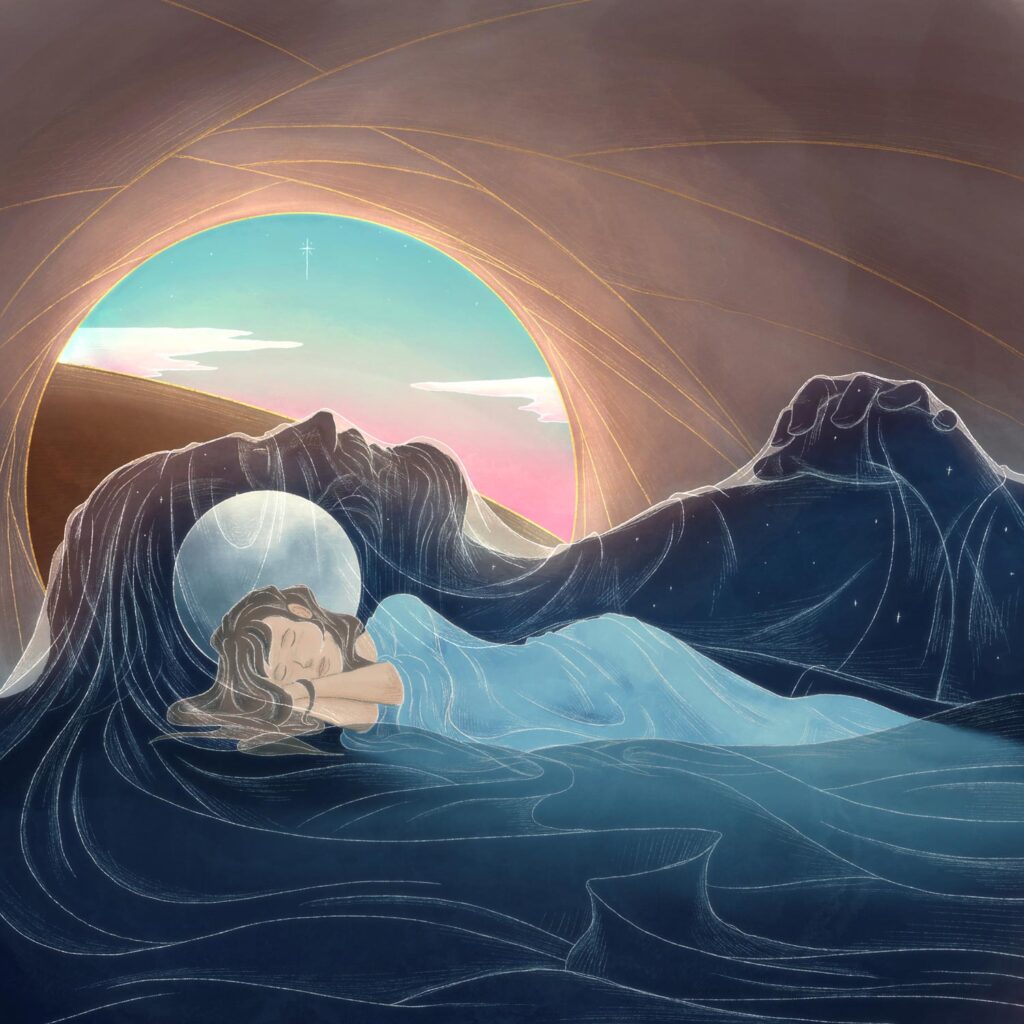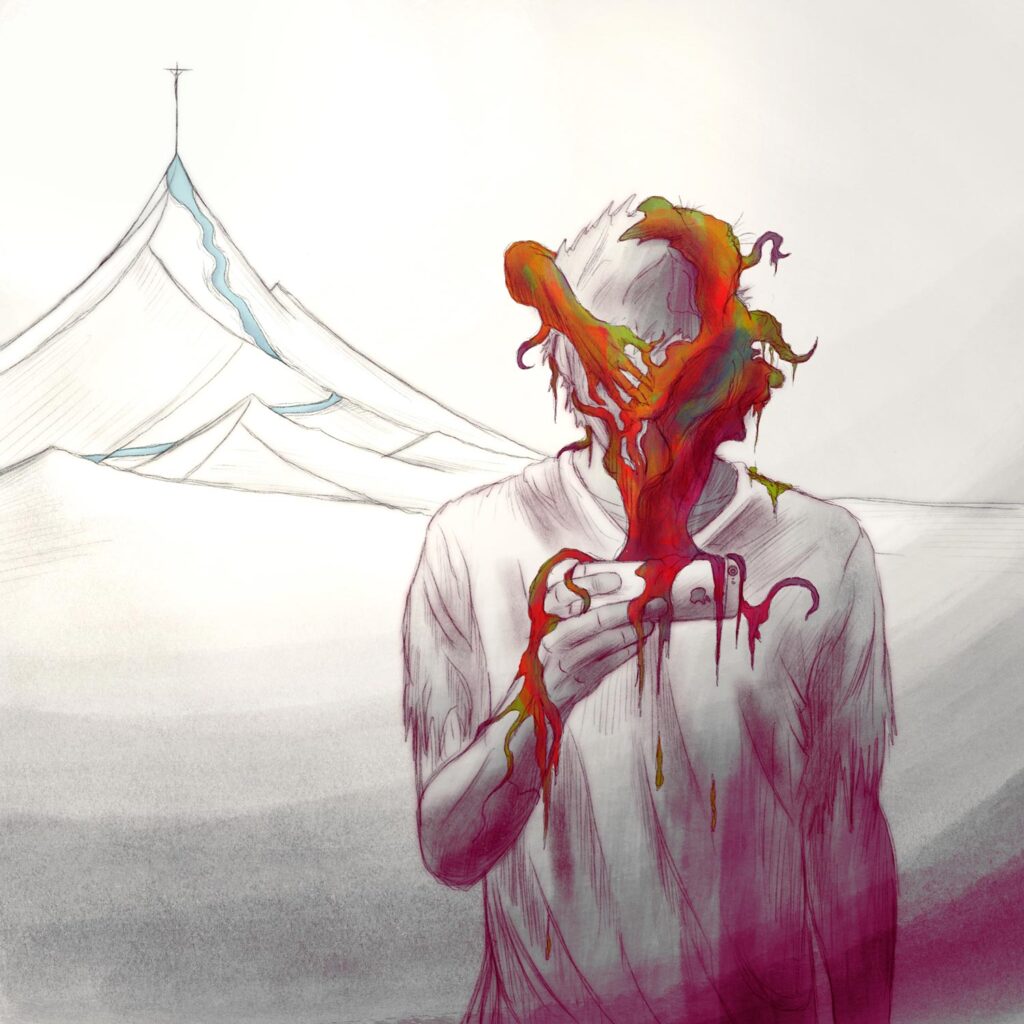A collection of evocative theological artwork saved forever on Arweave's permaweb
Illiterate societies have been more common than literate ones through most of human history. And before the written word, stories were often passed down through the generations using the visual arts. Cathedrals in Europe convey stories from the Bible in stained glass; First Nations groups record their community history in carved totem poles.
Even as the world has become more literate, there is still a place for the visual arts to tell stories in a way that uniquely connects with human experience.
This is what accomplished artist Christopher Powers has done with Visual Exegesis, a project that brings out the meaning of written words with visual art. Christopher is taking his catalogue of theologically-inspired artwork and turning them into NFTs on OpenSea, with art files stored on ArDrive.



Our Interview
We asked Christopher about what inspired him and why he chose ArDrive to store his art collection.
What is Full of Eyes?
Full of Eyes is visual-exegetical art. Exegesis is a Greek word that means to ‘draw out’ in the sense of unfolding the meaning of something; usually a text of Scripture or other literature. Typically, exegesis is done through words, but in visual exegesis, the artist expounds the meaning of a given text through imagery. The picture itself is the exegesis, a visualization of the artist’s interpretation of their text.
So, through Full of Eyes, I am creating art that visually exegetes the text of the Christian Scriptures.
What is the relationship between Word and Image?
Philosophers have debated for literally millennia regarding the interplay of Word and Image. Ultimately, though, comparing the two is like comparing the Sun and Moon: both are surpassingly beautiful in their own way and time, and both would be poorer for the loss of the other.
As a visual artist, I’m aware of the ways an image gives itself to and impacts the imagination of its viewer in a manner distinct from words.
However—returning to the Sun/Moon analogy—I would say it is ultimately Word that stands as the ‘solar’ queen of the arts, while Image is the ‘lunar’ princess.
How does viewing a visual exegesis impact someone’s engagement with the text?
By viewing the image, you are viewing the text itself through my eyes. My hope in doing this is not so much to project my reading of the text onto others, but to spark an imaginative engagement with the text.
When someone sees the image I’ve created, reads the corresponding text, and considers the two in relation to one another, they are drawn into a dialogue between image and word. The word illuminates and interprets the image, and the image reciprocally shines light back on the text. All of this is taking place within the experience of the viewer who receives both word and image through her own interpretive lenses, further enriching the conversation.
Ultimately, my hope is that the pictures of Full of Eyes will drive viewers back into the words themselves with renewed imaginative involvement.
What drew you into the NFT space?
Over the course of a week back in Fall 2021, around five people contacted me separately and suggested I look into NFTs as a venue for my digital art. I had not heard of them before this and, upon doing a bit of reading, I was shocked by the idea. How could someone pay so much money for a JPEG that I can download to my PC for free!?
However, as I did more research, I began to see the value of a verifiably unique digital asset, a token woven into a decentralized blockchain as a sort of virtual artifact that might plausibly remain as long as humans are on earth. As someone who has spent the last decade of my life creating art that exists—essentially—as 1’s and 0’s, tying my work to this sort of technology was extremely attractive.
However…there was an issue. I quickly realized that the NFT does not contain the actual artwork to which it points. It is, essentially, a bundle of data that includes a *link* to the asset. For a digital artist, this means an NFT is only as reliable as the place its associated art is stored.
What was your view of the NFT space before you stumbled upon Arweave?
I initially began minting my collection directly on OpenSea. I sold a few pieces before I realized that my art and metadata were—at best—stored on IPFS, and—at worst—centralized on OpenSea’s servers. Either way this put my art (and the links at the heart of my collectors’ NFTs) at the mercy of whoever pays the bills at OpenSea or the IPFS servers.
If either goes down (and, if we’re in this for the long run, then that is not an ‘if,’ but a ‘when,’) my art disappears and my NFTs become expensive 404s. I immediately stopped minting my art on OpenSea and began looking for a solution.
What were your thoughts and impressions of Arweave as you looked into it?
This led me to Arweave, a blockchain devoted to data storage whose innovative employment of ‘perpetual endowments,’ ensures data immutability for literally hundreds of years—if not the lifetime of the internet.
This was incredibly exciting to me. Like most artists, I want my art to remain and enrich humanity for as long as it possibly can. This always seemed difficult given that my work is digital and that even a well-printed canvas version isn’t really the *original* form of the art. Hard drives eventually die, and Google Drive (and other options like it) will eventually go away. How could my work be preserved for decades, for centuries, even for millennia (should humanity endure)? Arweave seemed to provide an answer.
How did Arweave change your mind about NFTs?
Not only was Arweave an incredible discovery for the sake of preserving my back catalog of digital art, but it was also the solution—and is, to my knowledge, the *only* current solution— to the problem of NFT impermanence. With art and metadata stored on Arweave, and Arweave links binding the NFT to its Ar-woven assets, I would be able to mint truly immutable tokens whose links would not break and whose art would never disappear.
Without reliably, multi-century permanence of assets, NFTs really are just the flash-in-the-pan fad that so many malign them for being. However, with this kind of true permanence—which only Arweave offers (despite the claims many make for IPFS)—NFTs become a virtual artifact that adds genuine value, verifiable uniqueness, and long-term collectibility to digital art. It is not an exaggeration to say that Arweave is *the* reason that I believe minting my art as NFTs is a worthwhile endeavour.
How did ArDrive help you in launching your NFTs on Open Sea?
When I discovered Arweave, I knew that was my best—and really only—option for reliably storing my the media and metadata associated with my NFTs. However, I’m an artist, not a developer, coder, or even a blockchain aficionado, so how was I going to upload 1,000 pieces of art, plus their associated metadata files, to Arweave and then somehow turn those into NFTs? I was at a loss, and that’s when I discovered ArDrive.
ArDrive’s blessedly familiar UI (files, folders, etc., just like I was used to in GoogleDrive or OneDrive) was exactly what I had been looking for! Here was a simple interface by which even the blockchain layman could begin uploading files to Arweave within minutes. On top of this, the ArDrive community on Discord was—and continues to be—an *incredible* resource to me throughout the process. They helped me each step along the way.
There is something genuinely satisfying about knowing that every asset and link in the final NFT is backed up by the generations-spanning storage promise of Arweave, and ArDrive was the app that allowed this all to happen for me.
Learn more
Learn more about Full of Eyes and Visual Exegesis:
- See Visual Exegesis collection on OpenSea
- View art on Instagram
- See the Full of Eyes website
- Explore Christopher’s Public Drive of art files
- Learn more about NFTs on ArDrive